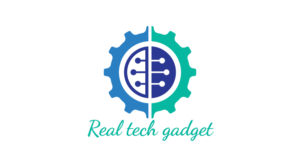Audit management software and asset calibration and maintenance software are integral tools for businesses aiming to streamline operations and ensure regulatory compliance. These solutions offer significant benefits, from improved accuracy and efficiency to enhanced reporting and data management capabilities.
Understanding Audit Management Software
Audit management software simplifies the auditing process, providing a centralized platform to manage audits from planning to execution. This software automates various audit tasks, including scheduling, checklist creation, data collection, and report generation, reducing manual effort and minimizing errors.
Key Features of Audit Management Software
The primary features of audit management software include audit planning and scheduling, audit execution and data collection, reporting and analytics, and corrective and preventive action (CAPA) management. These features ensure a comprehensive approach to audits, enhancing overall efficiency and accuracy.
Benefits of Implementing Audit Management Software
Implementing audit management software offers numerous benefits. It enhances compliance with regulatory standards, improves the accuracy of audit findings, and provides real-time visibility into audit processes. Additionally, it facilitates better resource allocation and reduces the time and cost associated with manual audits.
The Role of Asset Calibration and Maintenance Software
Asset calibration and maintenance software is designed to ensure that all equipment and instruments used in operations are accurately calibrated and maintained. This software helps businesses keep track of calibration schedules, maintenance tasks, and compliance requirements, ensuring operational efficiency and reliability.
Core Functions of Asset Calibration and Maintenance Software
The core functions of asset calibration and maintenance software include calibration scheduling, maintenance tracking, compliance management, and reporting. These functions help businesses maintain accurate records, ensure equipment reliability, and comply with industry standards and regulations.
Advantages of Asset Calibration and Maintenance Software
The advantages of using asset calibration and maintenance software are numerous. It ensures equipment accuracy and reliability, reduces downtime, enhances compliance with regulatory requirements, and improves overall operational efficiency. By automating calibration and maintenance tasks, businesses can focus on core activities, reducing the risk of errors and equipment failures.
Integrating Audit Management and Asset Calibration Software
Integrating audit management software with asset calibration and maintenance software provides a comprehensive solution for managing compliance and operational efficiency. This integration enables businesses to streamline processes, improve data accuracy, and enhance reporting capabilities, leading to better decision-making and overall performance.
Choosing the Right Software Solutions
Selecting the right audit management software and asset calibration and maintenance software is crucial for maximizing the benefits of these tools. Businesses should consider factors such as ease of use, scalability, integration capabilities, and support services when choosing software solutions.
Implementing Software Solutions Effectively
Effective implementation of audit management software and asset calibration and maintenance software requires careful planning and execution. Businesses should ensure that all relevant stakeholders are involved in the process, provide adequate training to users, and continuously monitor and evaluate the software’s performance to ensure it meets the organization’s needs.
Future Trends in Audit and Asset Management Software
The future of audit management software and asset calibration and maintenance software is likely to be shaped by advancements in technology, such as artificial intelligence, machine learning, and the Internet of Things (IoT). These technologies will further enhance the capabilities of these software solutions, providing even greater efficiency, accuracy, and compliance management.
Conclusion
Incorporating audit management software and asset calibration and maintenance software into business operations is essential for enhancing efficiency, accuracy, and compliance. By selecting the right solutions and implementing them effectively, businesses can achieve significant improvements in their audit and maintenance processes. For more information on effective software solutions, visit trackmedium.com.

